News
-
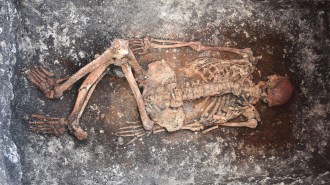 Archaeology
ArchaeologyThe Yamnaya may have been the world’s earliest known horseback riders
5,000-year-old Yamnaya skeletons show physical signs of horseback riding, hinting that they may be the earliest known humans to do so.
-
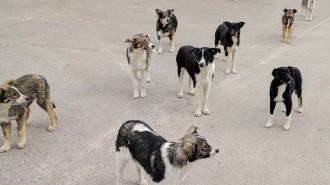 Animals
AnimalsWhat the first look at the genetics of Chernobyl’s dogs revealed
Dogs living in the Chernobyl Nuclear Power Plant industrial area are genetically distinct from other dogs, but scientists don’t yet know if radiation is the reason.
By Meghan Rosen -
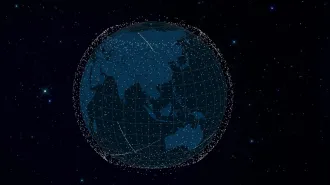 Astronomy
AstronomyHalf of all active satellites are now from SpaceX. Here’s why that may be a problem
Of the roughly 7,300 active satellites in Earth orbit, about 3,600 are part of SpaceX’s growing fleet of Starlink internet satellites.
-
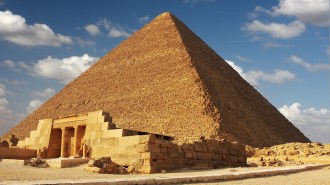 Particle Physics
Particle PhysicsMuons unveiled new details about a void in Egypt’s Great Pyramid
The subatomic particles revealed the dimensions of the void, discovered in 2016, and helped researchers know where to stick a camera inside.
-
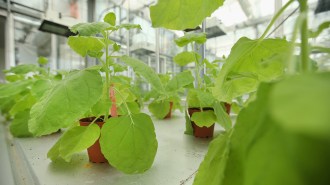 Life
LifePlant/animal hybrid proteins could help crops fend off diseases
Pikobodies, bioengineered proteins that are part plant and part animal (thanks, llamas), loan plant immune systems a uniquely animal trait: flexibility.
-
 Climate
ClimateWildfires in boreal forests released a record amount of CO2 in 2021
Boreal forests store about one-third of the world’s land-based carbon. With wildfires increasing there, fighting climate change could get even harder.
By Nikk Ogasa -
 Climate
ClimateMany Antarctic glaciers are hemorrhaging ice. This one is healing its cracks
Scientists have explored the recesses of an Antarctic glacier that is currently stable, helping improve predictions of the continent’s fate.
By Douglas Fox -
 Neuroscience
NeuroscienceHow meningitis-causing bacteria invade the brain
Microbes behind bacterial meningitis hijack pain-sensing nerve cells in the brain’s outer layers, disabling a key immune response, a mouse study shows.
-
 Archaeology
ArchaeologyAncient DNA unveils disparate fates of Ice Age hunter-gatherers in Europe
Ancient DNA unveils two regional populations that lived in what is now Europe and made similar tools but met different fates.
By Bruce Bower -
 Health & Medicine
Health & MedicineHere’s how lemon juice may fend off kidney stones
Lemon nanoparticles slowed formation of kidney stones in rats. If the sacs work the same way in people, they could help prevent the painful crystals.
By Meghan Rosen -
 Paleontology
PaleontologyThe oldest known pollen-carrying insects lived about 280 million years ago
Pollen stuck to fossils of earwig-like Tillyardembia pushes back the earliest record of potential insect pollinators by about 120 million years.
By Sid Perkins -
 Animals
AnimalsThe fastest claw in the sea belongs to young snapping shrimp
When juveniles snap their claws shut to create imploding bubbles, they create the fastest accelerating underwater movements of any reusable body part.
By Jake Buehler